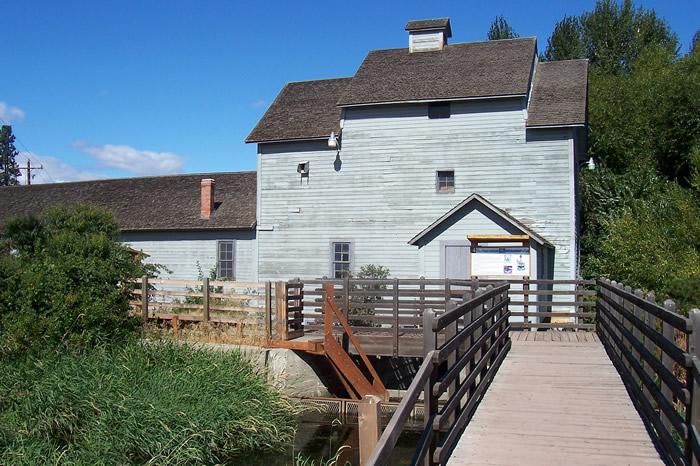
Thorp Grist Mill / The North Star Mill
Kittitas Co. | Washington | USA
Watersource: Yakima River
Thorp Grist Mill / The North Star Mill
Take Exit 101 from I-90, go north on Thorp Hwy N for one mile to the community of Thorp, then continue north on Thorp Hwy N about ? mile to Thorp Mill Town Historical Park on the right.

The Thorp Mill has been a part of Kittitas County since 1873. It functioned as a local mill until 1946. GPS: 47? 4.43'N, 120? 41.02'W 1,640'/500 meters Thorp Quadrangle
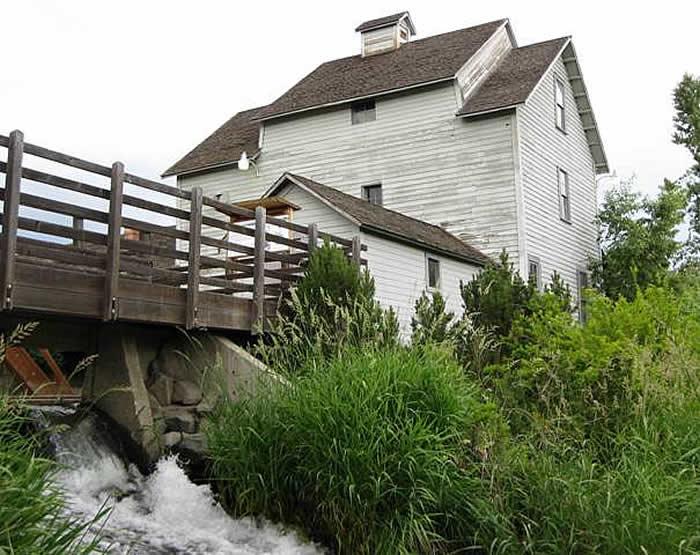
*Update: It is on the historical register and offers tours. It is located next to Ice Pond Park. Thorp Mill Town Historic Preservation Society, PO Box 7, Thorp WA 98946 - phone 509-964-9640 Nancy Wittenberg
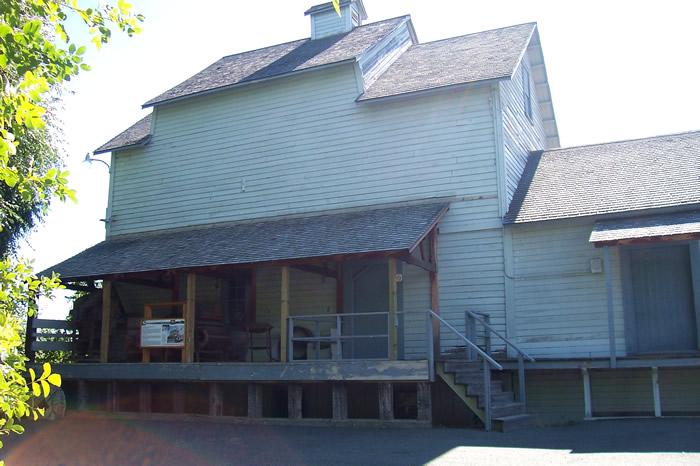
Thorp developed later, about a mile south of the mill, where the NP Depot was built. Oren Hutchinson died and left the mill to Horace in 1886, the same year the railroad came through a mile or so south. Harry Ramm owned the mill in 1897, then a half interest was sold to an unknown investor.
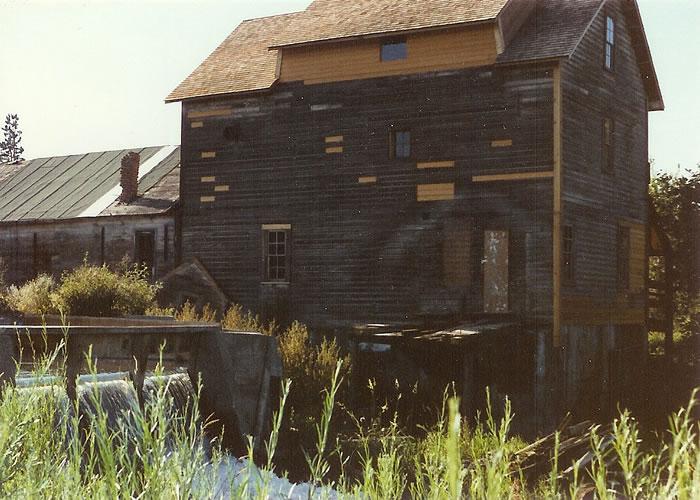
In 1880, James L. Mills sawed ponderosa pine logs into lumber, with which Oren Hutchinson built his grist mill from 1880-1883; and of which, numerous early buildings of Thorp were constructed. Hutchinson apparently provided the capitol investment while his German partner, Gustave Huhn, a millwright who later sold his share and moved to greener pastures, provided the expertise.
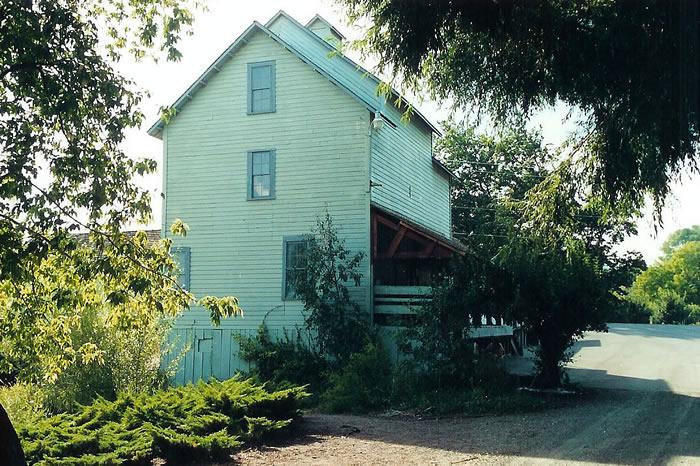
The original machinery was hauled from The Dalles, Oregon via team and wagon. The grist mill was built just north of the saw mill, both taking power from Mills Ditch (1879), which carried water from the Yakima River to the log pond, then hence to the mills.
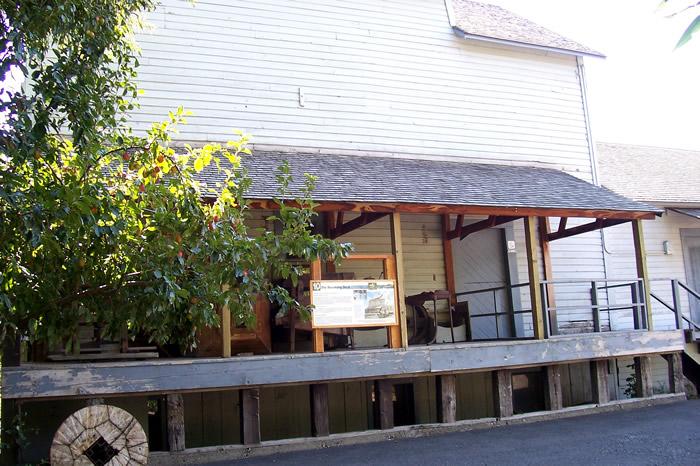
The Taneum Valley, as well as the larger, more encompassing Kittitas Valley, fed by the Yakima River fresh from the Cascade Mtns, was an early source of wheat produced with irrigated means. The small community that developed by the mill was named Oren.

The Turbine pit at the Thorp Mill. J.S. Kendall bought half interest in the mill in 1899, after the mill was renamed in 1898, from the unknown owner; the other half was still owned by Ramm. J.D.Mack bought Ramm’s half interest/share in 1901, leading the way to the next phase of milling at Thorp.
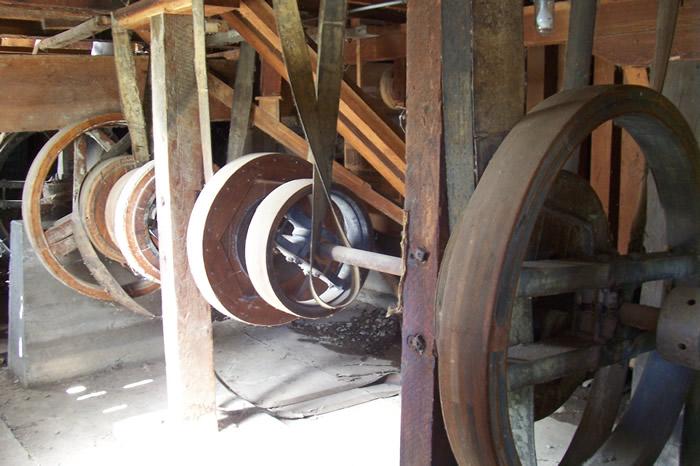
The power system Line shaft with its assorted pulleys. The mill, originally grinding grain to flour using buhrstones, was converted to the roller system in 1898 and 1904 by then owners, J.S. Kendall & J.D. Mack. In the process, the mills name changed to The North Star Mill. Various owners/operators followed, with Walter Leonard the last operator, closing the mill in 1946. The first known sales of flour, 75 barrels, from the mill occurred in April 1883.
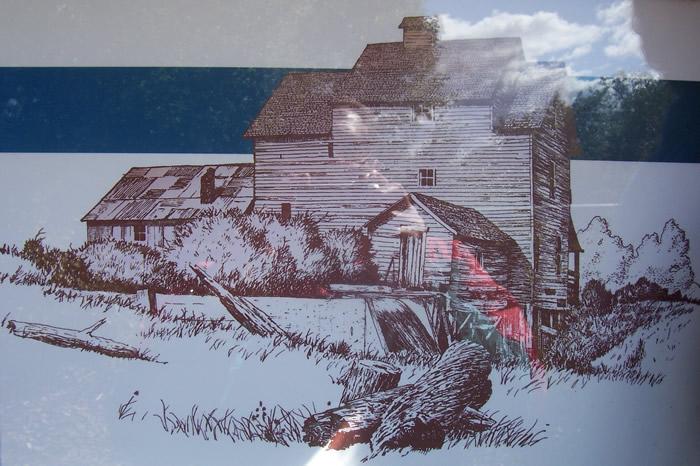
A photo of the mill, in Lithograph from, from an interpretive display on the mill grounds. . Nelson Mills, sawmill James’ son, installed a generator in the flour mill in 1906. The resultant power supply furnished Thorp homes and businesses with electricity two afternoons a week (clothes washing) and several hours each evening.
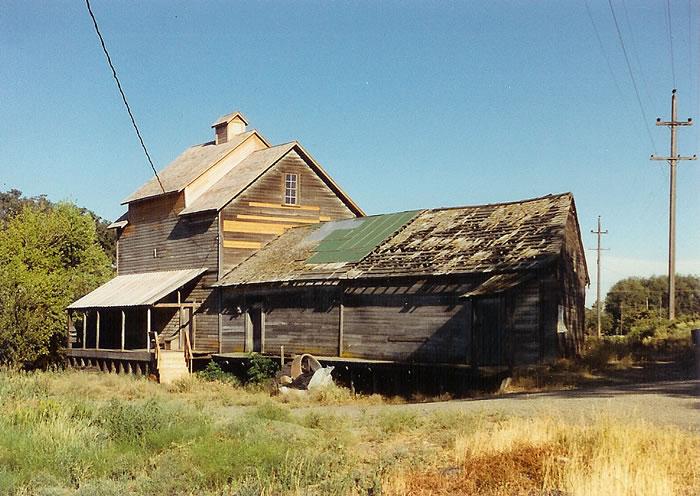
The mill resulted from a need for livestock feed, flour staples, and seed for planting. Native bunchgrasses, desirous for the cattle, eventually became supplemented by nutritiousTimothy grass, which was found to grow well in the valleys rich soils.The feed /flour mill, closed for 42 years, was purchased, cleaned, and restored in 1988 as a great community, utilizing several large gifts, in an effort to establish a historical focal point. A museum was developed using the excellently preserved milling machinery it contained. It has been placed on the National Register of Historic Places.
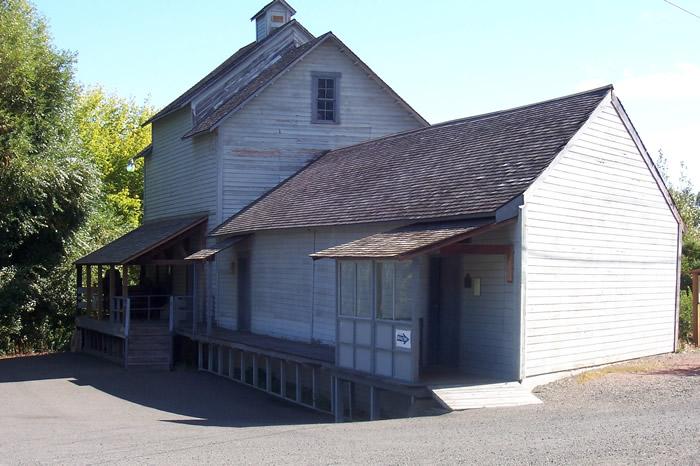
The Northern Pacific Railroads arrival in the late 1880’s provided a way to ship flour to the Puget Sound area via Snoqualmie Pass. A shallow pond of 22 acres, opposite the mill from the log pond, soon produced a new industry for Thorp as well as a source of entertainment and recreation from skating. Tons of ice were cut each winter from the pond using special saws, some pulled by horses, conveyor systems, and sawdust for packing the ice in a special barn/ice house provided by the sawmill. The ice was used for transporting perishable cargo via railroad shipment and also just shipped east to the major cities between Seattle and Chicago for use by individuals for cooling foods in ice boxes/early refrigerators. About 40,00 tons of ice was cut, packed, and shipped some years from Thorp, one of four ice producing along the line to Chicago. The industry some years employed up to 75 men during the winter to spring season.The ice pond area was purchased in 1990 by the Thorp Mill Town Hisrtorical Preservation Society. It is now an area of picnic grounds, restroom facilities, and trails among wildflowers.